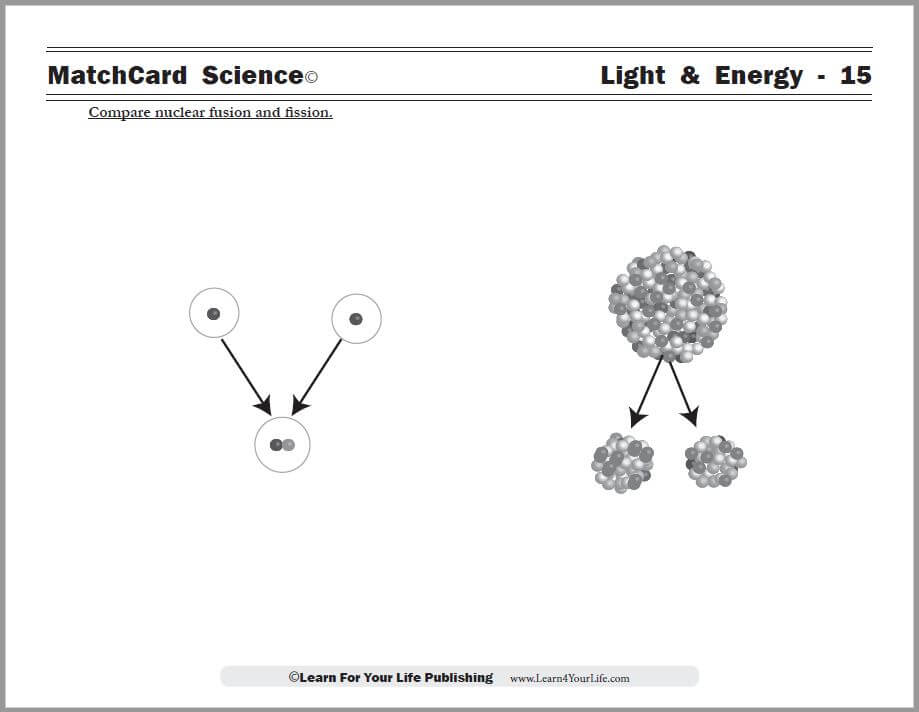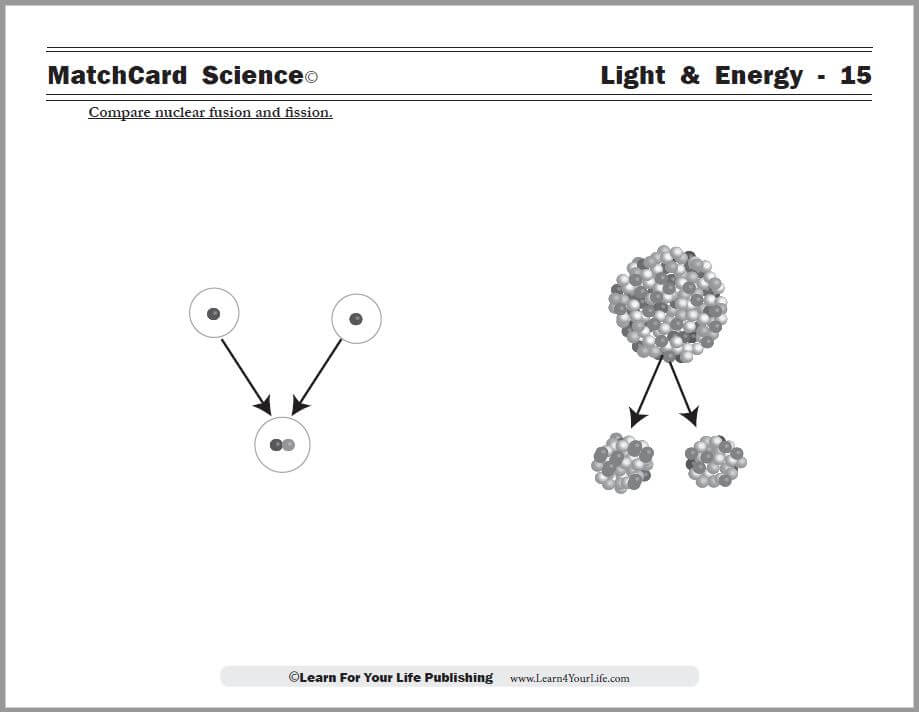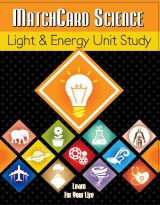Kinetic Energy
The Kinetic Energy MatchCard provides hands-on demonstrations and explanation of actual and potential energy.
Free Download Below


Using the Kinetic Emergy MatchCard


This is MatchCard #15 of the Energy Unit Study. Find more information on MatchCard Science below.
Two Types of Kinetic Energy
Objective: Compare potential and actual kinetic energy.There are two types of energy:
- Actual Energy: The energy of a moving object
- Potential Energy (or gravitational potential energy): The stored energy of a non-moving object.
Let's Experiment with Kinetic Energy
You will need the following:- a string (yarn or tooth floss will work)
- nuts and bolts of two or more sizes/weights
- a small toy car or rolling object
Perform the following steps:
- 1. Tie one end of the string around one of the bolts.
- 2. Hold the string so that it is dangling behind the toy car which is on the floor or table.
- 3. Keep your hand holding the string steady and in the same place. Now hold the bolt and pull it so it is at a 180% angle and parallel to the floor. The string should be held tight in a straight line.
- 4. Let go of the bolt so it falls and hits the car.
- 5. Measure how far the car travels.
- 6. Repeat the steps above with the same bolt, but different sizes of string. Note that the longer the stringer, the further it falls, the faster the speed, and the greater the energy.
- 7. Repeat steps 1 - 5 again, but with different masses of bolts. (It would be idea if you have two of the same size but different masses.) The greater the mass, the greater the energy.
Learn About the Two Types of Kinetic Energy
Gravitational Potential Energy
Potential energy is the stored energy. When you were holding the bolt, gravity gave the bolt potential energy.In the example above, the snow-filled tree branch had potential energy. Can you think of other examples of potential energy?
- A glass of milk near the edge of a table
- A rubber band that is stretched
- A wind up toy that is wound up
- Weights on a cuckoo clock
Actual Energy
Actual energy is the energy of a moving object. It occurred as the bolt was moving.Can you think of other forms of actual energy?
- Windmill
- Paddleboat
- Rubber band that has been released
- Avalanche
The Kinetic Formula
Two factors increase the amount of energy in a moving object:- Mass of the object
- Speed of motion
EK = (1/2)mv2
What's that supposed to mean?Kinetic Energy = (1/2 the mass of an object) X (the velocity squared)
About the Root Kinet
Kinet is the Greek word for motion. That’s where we get the word for kinetics.A kinesthetic learner is someone who learns best by physical movement. Are you a kinesthetic learner?
Kinesiology is the study of human movement. How would you like to be a kinesiologist? One of their functions is to modify equipment to make it more comfortable and practical for human use.
MatchCard Science
How To Use MatchCards

Download the FREE MatchCard Science Instructor's Guide and see how MatchCards can make building their science knowledge base fun.
Light and Energy Unit Study

Download the entire Light and Energy unit study.
12 Science Unit Studies

Chemistry is only one of twelve complete unit studies for kids in 3rd to 8th grade.
Comprehensive objectives, hands-on projects, suggested science fair experiments, and the fun game-like MatchCards keep them interested in learning science. See all twelve MatchCard Science Unit Studies.
About Our Site
Hands-On Learning













